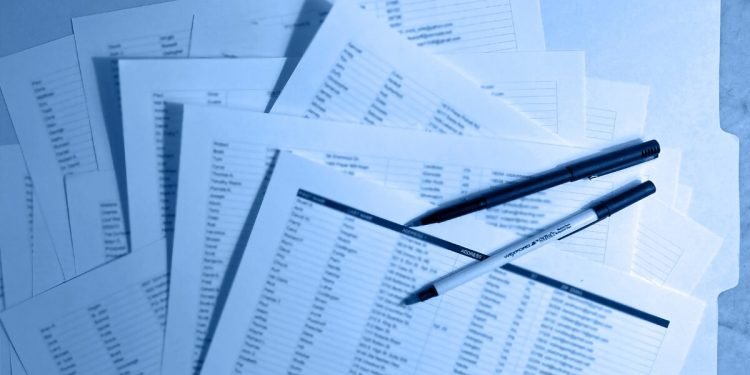Faculties have lengthy used a dependable intermediary to determine potential college students. However what occurs if and when a brand new intermediary emerges?
The surge in test-optional insurance policies might persuade extra folks — particularly low-income and minority college students — to choose out of testing, that means faculties may not be capable to discover them.
A staff of researchers weighs that query in a new report launched on Tuesday by the Institute for Faculty Entry & Success, an education-advocacy group often called TICAS. It’s illuminating studying for anybody with a stake in scholar recruitment and the large, unregulated business that helps faculties generate “leads.” That business, the report says, “is present process a radical transformation that threatens to trigger a college-access disaster.”
First, let’s evaluate some historical past. The standardized-testing business has lengthy been the principle intermediary in recruitment. Excessive-school college students taking the ACT, SAT, and Superior Placement exams can choose in to share their contact data with faculties, which buy “scholar lists” from the ACT Inc., and the Faculty Board, each nonprofit organizations, in addition to different distributors. (The Faculty Board administers the SAT.)
These lists include particular standards concerning the college students (e.g., test-score vary, high-school grade-point-average, and ZIP codes). Faculties use that data to recruit them (i.e., bombard them with brochures and electronic mail messages).
In brief, scholar lists are the lifeblood of admissions. However they’re problematic, the researchers argue. Final week TICAS launched the first two of three related reports. Each said that scholar lists perpetuate racial and socioeconomic inequality by permitting faculties to systematically exclude low-income and underrepresented minority college students from recruitment funnels. How? For one factor, faculties can use search filters to zero in on particular geo-demographic classes, prioritizing college students from well-resourced excessive faculties and prosperous areas. That may assist clarify why a given scholar hears from 30 faculties whereas one other with an identical educational file hears from only a few.
That mentioned, there’s an necessary paradox right here: Pupil lists, nonetheless imperfect, play a vital position in faculty entry, the researchers write. College students who’re contacted by faculties utilizing the Faculties Board’s Student Search Service are 23 % extra more likely to apply to a collaborating faculty than college students with related backgrounds who opted out, in accordance with recent research commissioned by the Faculty Board. Almost 20 % of scholars invited to use to a school through the Pupil Search Service additionally enroll, growing the likelihood that somebody will enroll on the faculty that bought their contact data by 22 %. These impacts are twice as giant for historically underserved college students,” the analysis discovered.
College students can entry that service by BigFuture, the Faculty Board’s college-planning web site — even when they don’t take the group’s checks. But when a scholar’s title doesn’t find yourself in a given database within the first place, a school can’t discover them there, or typically, anyplace. So what occurs in a world the place fewer faculty candidates take the ACT and SAT — and may not learn about BigFuture?
Ozan Jaquette, an affiliate professor of upper schooling on the College of California at Los Angeles and lead researcher of the student-list mission, predicts that the pandemic-driven surge in test-optional insurance policies will persuade an increasing number of college students, particularly low-income and underrepresented minority college students, to choose out of testing altogether. “For higher or worse, the testing companies have been a necessary mechanism for school entry,” he says. “If these companies aren’t the leaders within the student-list business, will we find yourself with one thing that’s higher or worse than what we had beforehand? Will new sources of scholar lists have the identical protection that the ACT and Faculty Board had beforehand, when each scholar thought that they needed to take these checks?”
These questions lead us again to the intermediary. The scholar-list business has lengthy included a slew of for-profit distributors that promote information on potential candidates to high schools. Sources of student-list information embody faculty search-engine web sites and college-planning software program utilized by excessive faculties. EAB, a big enrollment-consulting firm, is among the many entities the report describes as poised to gobble up extra of the scholar checklist market — and, maybe, change into the intermediary. Not like ACT Inc. and the Faculty Board, which promote names to high schools at a “per-prospect” value, the report says, EAB and different firms preserve distinctive databases of scholar names and prohibit entry to high schools that pay for subscription and/or consulting companies.
That enterprise mannequin, the report says, raises coverage considerations that federal companies, such because the Federal Commerce Fee, ought to think about regulating. “We’re involved that, with out vital authorities intervention, the loss of life of the SAT/ACT examination will depart college students unwittingly reliant on for-profit companies that maximize revenue by offering prospect names solely to universities that pay for costly subscription or consulting companies. Equitable faculty entry is simply too necessary to depart to the market right this moment, and that can solely be extra true as the brand new for-profit gamers enter the area.”
It’s necessary to recollect a pair issues right here. First, the ACT and SAT, although diminished in significance, are alive and effectively in the mean time. Additionally, scholar lists are instruments: Institutional leaders set up the enrollment objectives and priorities that such instruments assist them obtain. “If a college solely desires to enroll rich college students,” the researchers write, “regulating scholar lists is not going to compel the college to enroll poor college students.”
Nonetheless, the character of enrollment instruments — how they really work — issues, the researchers argue. The alternatives faculties make when buying names, they write, “are structured by the structure of student-list merchandise — which prospects are included within the product, the focusing on behaviors allowed by the product, and the focusing on behaviors inspired by the product.”
Within the paper launched this week by TICAS, Jaquette — together with Karina G. Salazar, an assistant professor within the Heart for the Examine of Larger Training on the College of Arizona, and Crystal Han, a knowledge scientist — suggest an alternative choice to the present student-list business: a “public choice.” That’s, a free, sturdy nationwide database loaded with college students’ contact data, high-school GPA, and the programs they’ve taken.
Their concept, the researchers acknowledge, would require immense cooperation amongst states, districts, and faculties whereas posing a slew of technical challenges. Additionally, who would pay for it?
“The thought’s sort of pie-in-the-sky,” Jaquette says.
However he hopes that it sparks larger dialogue of how scholar lists can work for — and towards — faculty entry.
“There are college students who’re going to go to varsity it doesn’t matter what,” Jaquette says. “For them, the scholar checklist may have an effect on which establishment they go to. However then there are college students on the margin of going to varsity or not, or going to a two-year faculty as a substitute of a four-year faculty. It’s necessary for faculties to determine and call these college students, to make these scholar really feel needed.”











